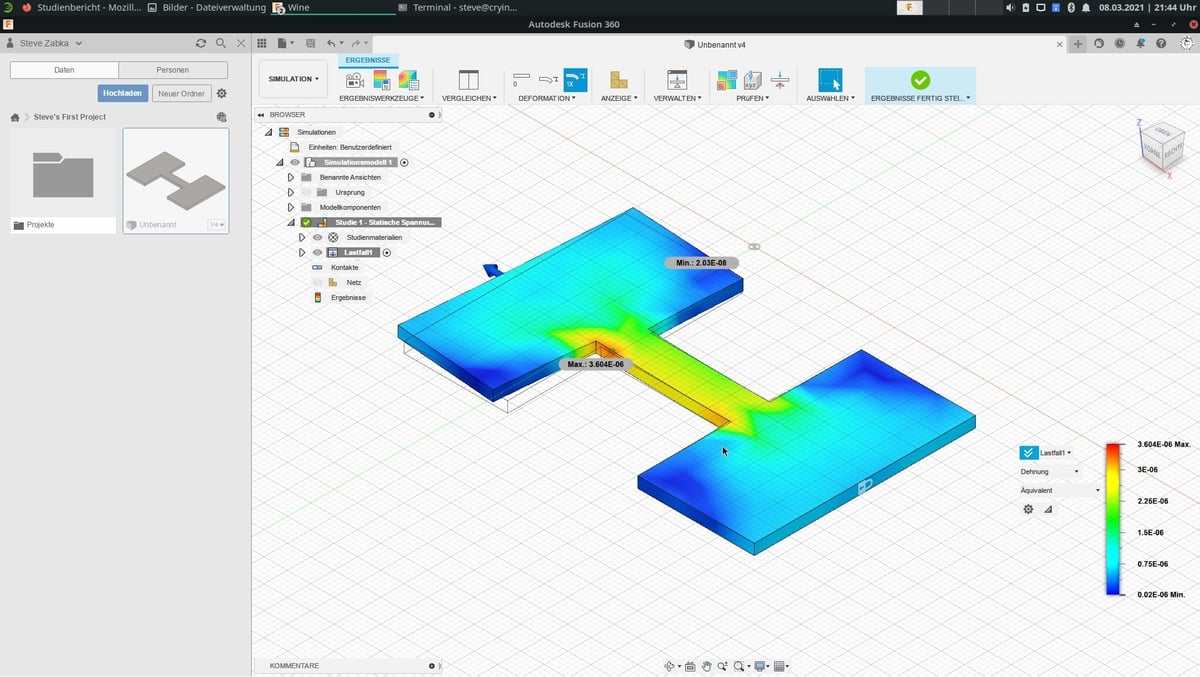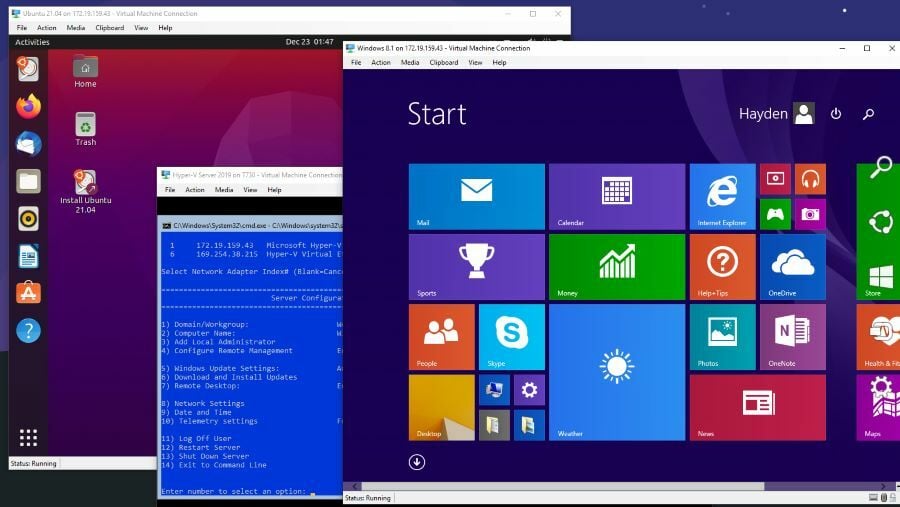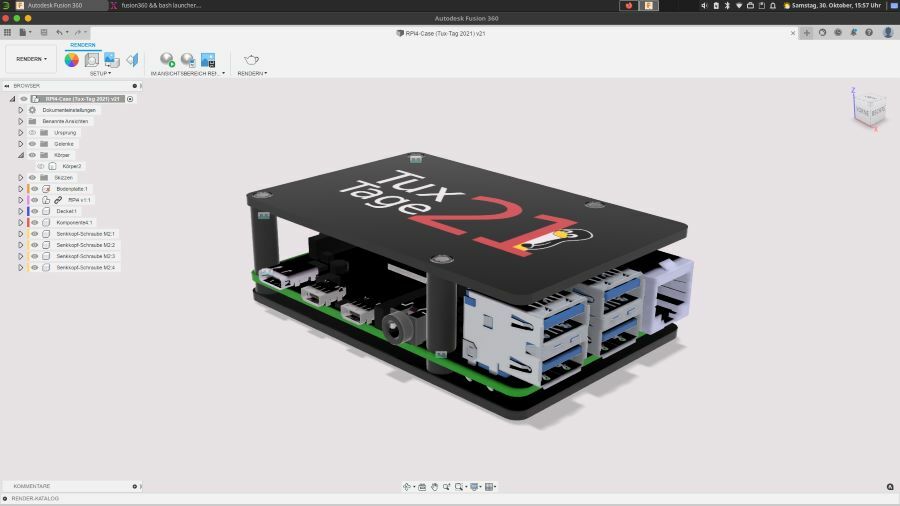Fusion 360 is one of Autodesk’s most popular products for 3D design. Aside from the standard CAD tools, it also has a CAM environment, a built-in 3D slicer, and top-notch simulation tools. These features combined make this a very desirable CAD program for all kinds of users, from beginners to professionals.
Unfortunately, Fusion 360 is only available on Windows and MacOS, meaning it can’t be directly installed on Linux. But when has anything ever stopped a Linux user from getting what they want?
This article will go over a few workarounds for Linux users to run Fusion 360 in their machines. We’ll also talk about the pros and cons of each method and provide some links to tutorials. If it still all sounds too hard, we’ve also got some suitable alternatives that natively support Linux.
Possible Solutions

Linux platforms come packed with unique features, but some commercial software is still not published for Linux. While alternative software is usually available (and we’ll mention some good options at the end of this article), sometimes you need a specific program.
There are currently three workaround solutions for Fusion 360 specifically:
- Browser version: Autodesk offers a web-based version of Fusion 360 for users with an educational subscription that works with Chromebooks and any other device with an internet browser. Linux users usually use the open-source Chromium browser to run it.
- Virtual machines: Virtual machines are essentially emulations of computer systems, meaning that a “second computer” is created virtually within your Linux platform and can run another OS. In this case, Fusion 360 would be installed and run within this virtual computer, on either Windows or MacOS.
- Wine: Wine is a free program that allows Windows applications and games to run in Unix-like operating systems such as Linux and MacOS. It’s a compatibility layer rather than an emulation, which basically translates from Windows to Linux.
How Do They Work?

If you’re a seasoned Linux user, you most likely know these solutions by now. However, if you’re new to the platform and feel like we’re talking another language, we’ll break down some of the steps required so that you have a clearer picture of each solution.
Running Fusion 360 in a web browser is very straightforward but will require an active educational license. We know that few people qualify for such licenses, so from here on, we’ll be focusing on the other two workarounds that can be somewhat complicated.
Let’s start with virtual machines. First, we need to emulate a new computer within Linux, and this can be done by programs like Oracle VirtualBox, VMWare Workstation, and GnomeBox. Once the virtual machine is set up, a new Windows instance must be installed, which might require a license. Finally, Fusion 360 can then be installed and run through this emulated Windows system. Phew!
Now, for the other solution, we first need to download and install Wine plus a bunch of other packages. Then, some setting up and configuring is required before finally installing Fusion 360 through it. It sounds less complex overall than running a virtual machine, but it does still take some time to get everything up and running.
Are They Worth It?

Setting up virtual machines and Wine sound like a lot of work. In the end, are these workaround solutions worth it to get Fusion 360 running in a Linux machine? The short answer is: it depends.
If you absolutely need Fusion 360, rest assured that these solutions are proven to work in many Linux platforms. However, they’re known to have performance issues, especially when using virtual machines. After all, you’re splitting your hardware to run two different operating systems simultaneously.
In addition, you’ll probably encounter some issues along the way when setting up either a virtual machine or Wine, which will require some troubleshooting to get past. And remember, these are workaround solutions, so newer releases of Fusion 360 may create future problems, too.
Still, once set up, both these solutions will enable you to run other Windows programs, which is a plus. Moreover, all the software required is free to use, including Fusion 360 personal licenses.
In the end, it will all come down to how badly you want (or need) to run Fusion 360, specifically.
How to Do It

By far the easiest solution is to run Fusion 360 in a web browser. If you qualify for an educational license, you can launch the online version of Fusion 360 directly from Autodesk’s website.
As for the other solutions, if you want to go forward and get Fusion 360 up and running on your Linux platform, here are some detailed tutorials that will help you in this task.
There are plenty of tutorials on how to set up a virtual machine with Windows. However, the tutorial by Abhishek Prakash teaches beginners how to install Windows 10 in VirtualBox on Ubuntu, and it’s pretty thorough. It provides links to the software required and was recently updated.
For the solution with Wine, Cryinkfly has a YouTube tutorial that covers the entire process, plus a GitHub repository with troubleshooting tips and additional documentation. They also developed a script that facilitates the setup and configuration process.
Fusion 360 Alternatives on Linux

If you don’t mind using other CAD software or just don’t want to go through the process of getting Fusion 360 on Linux, here are some good alternatives that support 3D modeling:
- FreeCAD, as the name suggests, is a free 3D CAD program with a focus on engineering. For more information on how FreeCAD and Fusion 360 compare in detail, be sure to check our comparison article.
- SolveSpace is open-source 3D CAD software for Windows, MacOS, and Linux. Like Fusion 360, this is fully parametric CAD software, and it’s completely free to use.
- Onshape is a browser-based 3D CAD tool that doesn’t require installing anything on your computer, you just need a Chrome browser to use it. There’s a free version available.
License: The text of "Fusion 360 on Linux: How to Run It" by All3DP is licensed under a Creative Commons Attribution 4.0 International License.


